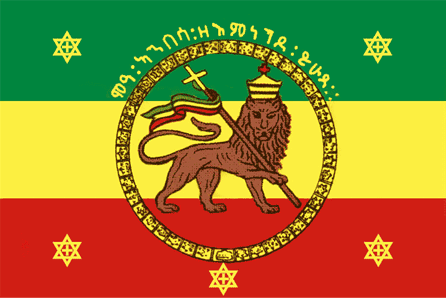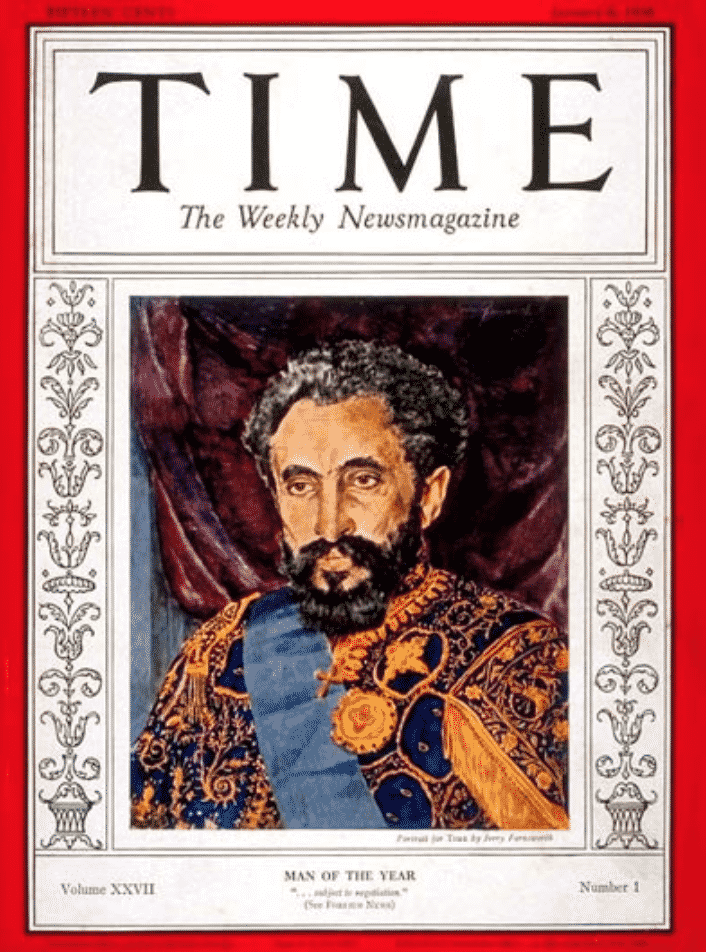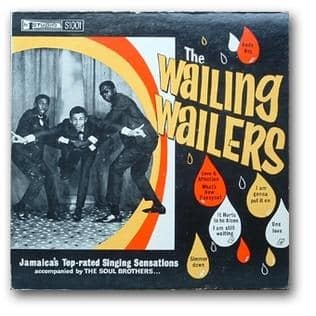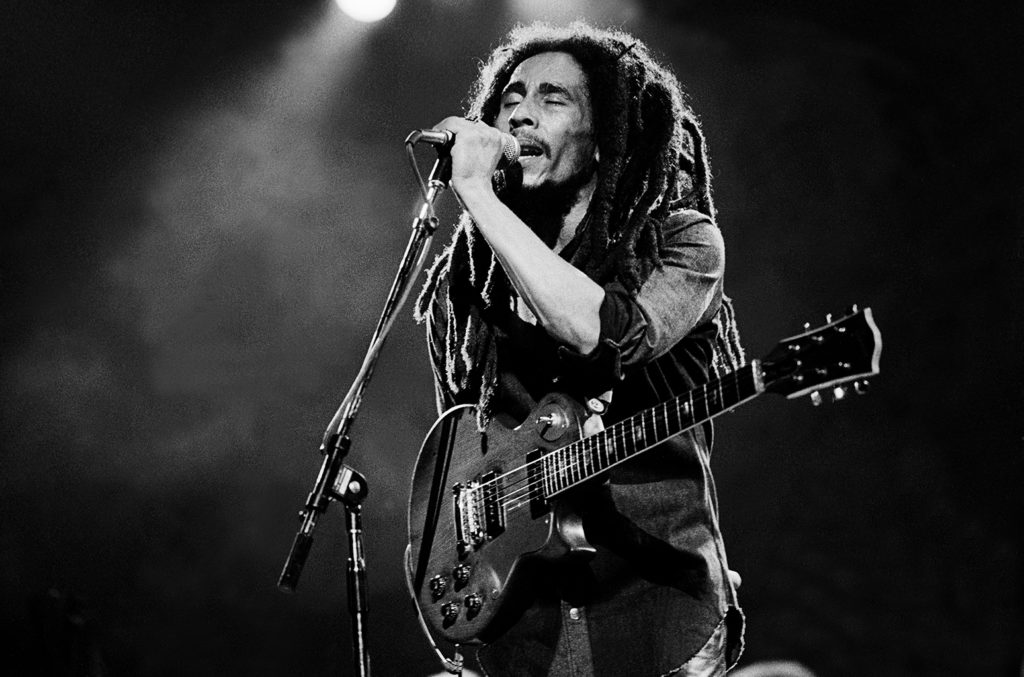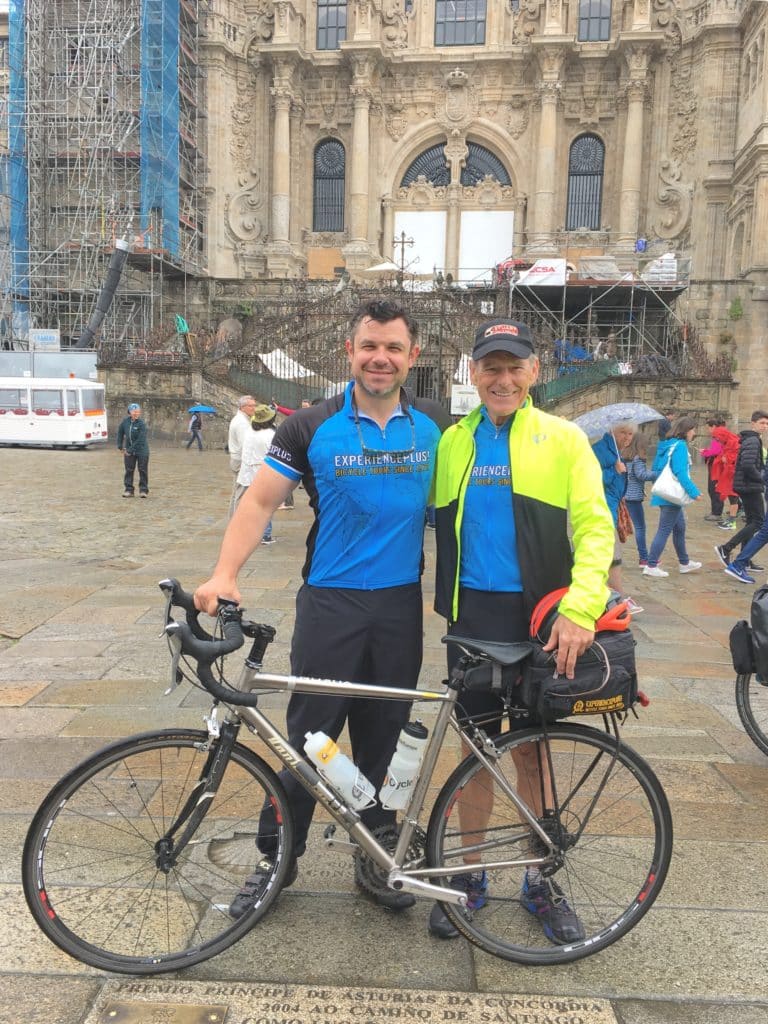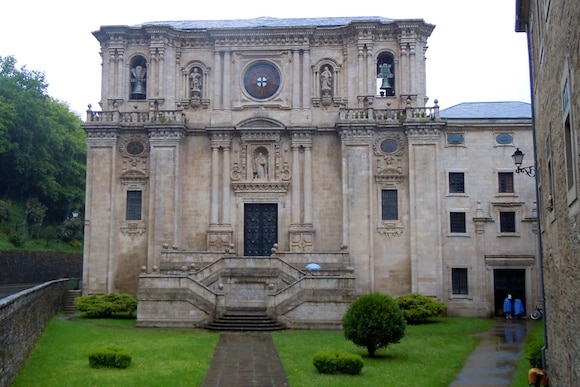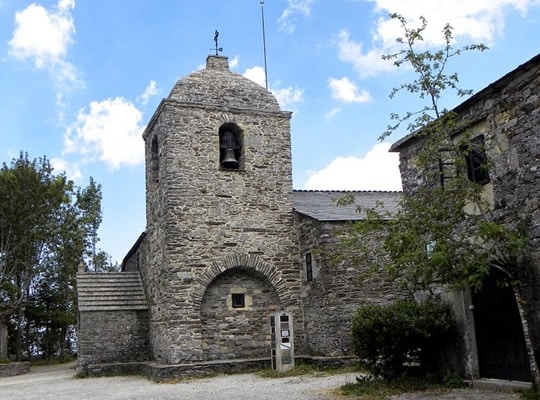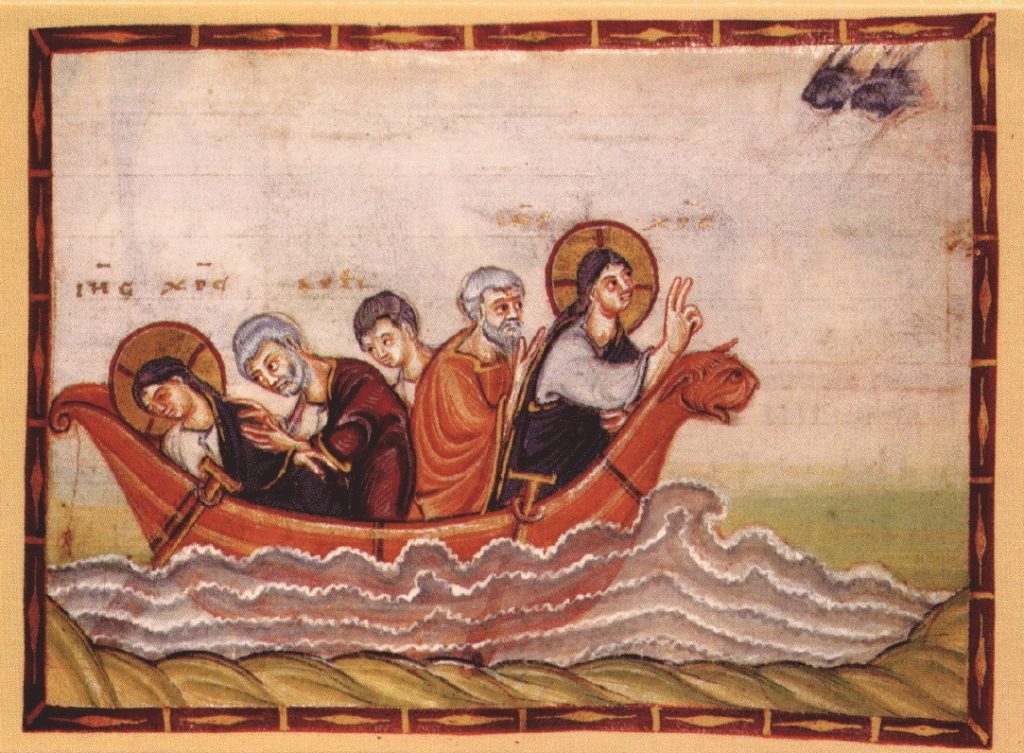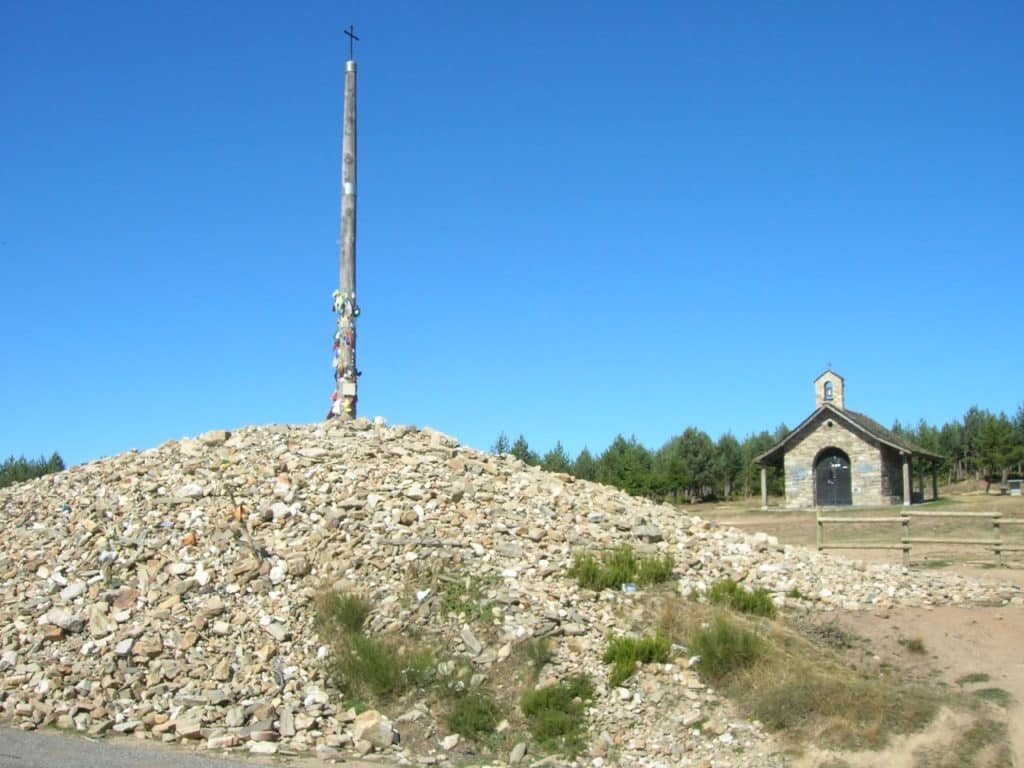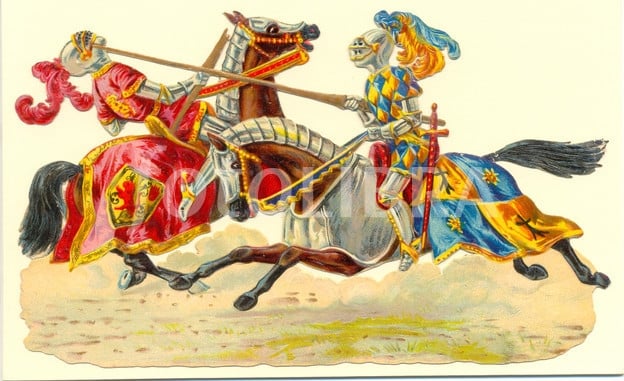I just returned from the Caribbean. As I listened to the music Bob Marley and the local reggae music, I tuned in with my theological ear. Certain lyrics stood out to me, for example, this line from Marley’s “Get Up Stand Up” (1973):
We sick an’ tired of-a your ism-skism game –
Dyin’ ‘n’ goin’ to heaven in-a Jesus’ name, Lord.
We know when we understand:
Almighty God is a living man.
So who is this “living man” who is God? Is it Christ or someone else? Hmm.
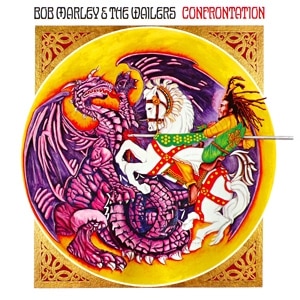
Bob Marley depicted as Saint George on his final album “Confrontation”
So I read through the lyrics and read up on Rastafari theology and its appropriation of Christian Messianism. Since most people interface Rastafari beliefs via Bob Marley’s music, I’ll examine Rastafari theology through the lens of Bob Marley. And so to begin, we should recognize that Marley experienced three theological periods during his life:
- Roman Catholic – from his birth in 1945 till 1966 when he was 21. His father was a white Jamaican captain derived from England. His mother was a Jamaican girl. He was 59. She was 18. His father died of a heart attack at age 70, when Bob was 10 years old. It seems that his mother was a Catholic.
- Rastafari – At age 21, Marley married Rita Anderson, a Rastafarian. Marley wholeheartedly adopted the Rastafarian identity and theology. This period lasts from 1966 (age 21) till about 1979.
- Ethiopian Orthodox – Marley became less enthusiastic about the Rastafari movement, especially after the death of Haile Selassie in 1975 (more on that below). By 1978 Marley’s music is less political, less militant, and less Rasta. Themes of love begin to dominate the music. Beginning 1979-1980, Marley sought membership within the Ethiopian Orthodox Church of Haile Selassie. Archbishop Abuna Yesehaq baptized Bob Marley into the Ethiopian Orthodox Church, giving him the name Berhane Selassie, on 4 November 1980. Marley died of cancer seven months later on 11 May 1981 and received an Ethiopian Orthodox funeral.
101 Intro to Rastafari Messianic Theological:
Trinitarian. Rastafari are traditionally Trinitarian and worship God the Father and His Son Jesus Christ and the Holy Spirit. They tend to depict Jesus as black and reject European depictions of Christ. As we will see below, they also see King Haile Selassie as a reincarnation or avatar of Jesus Christ. Some more advanced Rastafarians hold that God has had four avatars: Moses, Elijah, Jesus, and Haile Selassie.
- They read the Old and New Testament. They tend to quote the King James Version.
- Ethiopia is Politico-Prophetic. Rastafari read the Bible in a way to see the African nation of Ethiopia as playing a prophetic role in religious action and political justice. This is why the Rasta movement is defined by the colors of the Ethiopian flag.
- Ethiopic Messianism. They also believe that King Solomon and the Queen of Sheba had a baby together and that this child established a Davidic-Solomonic Messianic royal dynasty in Ethiopia.
- Pan-African. Rastafari theology is a religious Pan-African movement that looked forward to: a) the unification of all African nations; and B) the return of all dispersed Africans back to Africa. Ethiopia will be the instrument of this reunion.
- King Haile Selassie as Messiah. Rastafarian name themselves after Ras Tafari Makonnen (Ras means “Duke”), the baptismal name of His Imperial Majesty Haile Selassie I, King of Ethiopia. They believe that “Ras Tafari” or “Haile Selassie” is the heir of the Davidic-Solomonic promises and that his celebrated coronation on 2 November 1930 was an apocalyptic and prophetic event signaling redemption for Africa and all dispersed Africans. The movement identified King Haile Selassie as “Messianic” or “the Messiah” or “Jesus reincarnate” or “divine” or “Jah.” King Haile Selassie was named Man of the Year in 1936, thus increasing expectation:
- Smoking cannabis was a cultural Jamaican practice. By association it became a defining element of Afro-Caribbean identity and Rastafarian spirituality. Rastafarian identified the “healing leaves” of Revelation 22:2 as cannabis: “and the leaves of the tree were for the healing of the nations.”
- Dreadlocks. The growing of dreadlocks is Biblically inspired by the Nazarite vow of Numbers 6: 5–6: “During the entire period of their Nazarite vow, no razor may be used on their head. They must be holy until the period of their dedication to the LORD is over; they must let their hair grow long.”
- Concubinage and Polygamy. Rastafarians hold David and Solomon as their spiritual fathers. Following their example, they allow for polygamy and concubinage. The Rastafarian women (like Bob Marley’s wife Rita) allowed their husbands to sleep with other women as they saw fit. Marital monogamy is not binding because it was not binding for David or Solomon.
Origin of Rastafari Theology
- Beginning in 1930, Jamaican (Protestant) preachers began to describe the coronation of King Haile Selassie I of Ethiopia as the fulfillment of Revelation (5:2–5; 19:16), Daniel (7:3), and the Book of Psalms (68:31).
- Jamaicans began to see themselves as supporting the “black king of Ethiopia” and not the “white king of England.” Supporters of Ras Tafari began to be identified as Rastafarians.
- In 1935, Jamaican preacher Leonard Howell published the tract The Promised Key which explained that Emperor Haile Selassie (Ras Tafari) was the Messiah, that Black people were the chosen people, and they would soon be repatriated to Ethiopia and experience political and economic prosperity. The tract is the founding document of Rastafarian belief and marks the move from seeing Haile Selassie as merely prophetic to “the divine Messiah.”
- Leonard Howell taught that there are 6 principles to Rastafari theology:
(1) hatred for the White race;
(2) the complete superiority of the Black race;
(3) revenge on Whites for their wickedness;
(4) the negation, persecution, and humiliation of the government of Jamaica;
(5) preparation to go back to Africa; and
(6) acknowledging Emperor Haile Selassie as the Supreme Being and only ruler of Black people - Haile Selassie visited Jamaica for the first time in August 1966, with crowds of Rastas assembling to meet him at the airport.
- The death of Haile Selassie in 1975 lead to alternative conspiracies about a faked death, his resurrection, his second coming, or to his spiritual force being released into the world. However, as no Pan-African change materialized, the Rastafari movement lost momentum. Among black communities, rap replaced Rasta-style reggae as the musical force for revolution and political change. However, Rastafarian imagery and language continues to dominate pro-African movements in the West. The emphasis on Haile Selassie has mostly been exchanged for militant Socialism and the deification of the individual.
Bob Marley as Rastafarian and then as Ethiopian Orthodox:
As stated above, Bob Marley became Rastafarian in 1966 at age 21. Here’s his album cover with the The Wailers from 1965 with no signs of Rastafarian identity, with Bob Marley centered:
With their second album in 1966, they became political and took on a guerrilla revolution identity.
“I Shot the Sheriff” was released in 1973 on their sixth LP Burnin’. The album reached 151 on Billboard 200. The next year in 1974, Eric Clapton covered “I Shot the Sheriff” and it was a number one hit. This lifted Bob Marley and the Wailers into fame as fans desired to buy/listen to the original version. All of Marley’s subsequent albums did well, as he peaked in 1977 with the LP Exodus. By 1980 he was playing Madison Square Garden in NYC.
In 1977, Marley had been diagnosed with a malignant skin cancer on his toe. Doctors suggested full amputation of the toe. Marley kept the toe. On 21 September 1980, he learned that the cancer spread to his brain. He played his last concert on 23 September 1980 in Pittsburg, Pennsylvania.
At this last live concert he sang: “We know when we over-stand: Almighty God is a living man.” It’s not clear if he was merely honoring the original lyrics, or whether he still actually believed that the now-deceased King Haile Sellasie was still God Almighty. Probably the former.
About 40 days after receiving his terminal cancer diagnosis, Archbishop Abuna Yesehaq baptized Bob Marley into the Ethiopian Orthodox Church on 4 November 1980. Afterward he cried for half an hour.
Bob Marley died of brain cancer on 11 May 1981.
Here is a full YouTube video with Archbishop Abuna Yesehaq, the one who baptized Bob Marley into the Orthodox Church. He explicitly states that the Ethiopian Orthodox Church is NOT Rastafarian:
- 2:50 Abuna Yesehaq says that 20,000 Rastafarians were baptized into the Ethiopian Orthodox Church, but no all remained. From the video, it seems that Abuna Yesehaq did not require the newly baptized to renounced their Rasta beliefs. If so, this is troubling.
- 3:40 Abuna Yesehaq says that Haile Selassie was a member of Ethiopian Orthodox Church and denied he was divine.
- 4:20 Haile Selassie sent Abuna Yesehaq to convert Rastas in Jamaica.
- 5:50 Abuna Yesehaq says dreadlocks are okay
- 7:05 Abuna Yesehaq says “I baptized Bob Marley”
- 8:00 Abuna Yesehaq explains three differences with Roman Catholics: papal infallibility, miaphysite nature of Christ, procession of Holy Spirit.
- 10:40 Abuna Yesehaq explains how Bob Marley wanted to learn and conform to Orthodox practice, especially with regard to concubinage and polygamy.
- 11:30 Abuna Yesehaq told Bob Marley to be monogamous.
- 11:46 Abuna Yesehaq explains how Bob Marley cried for half and hour after baptism.
- 12:30 His wife Rita Marely was baptized with her children in Ethiopian Orthodox Church in 1973.
- 13:15 Bob Marley assented that Jesus crucified not Selassie is Christ.
It remains unclear whether Bob Marley repudiated his belief that Selassie but this interview seems to indicate that he did so and that he died a faithful member of the Ethiopian Orthodox Church.
Question: Do you have any questions about Rastafarian beliefs? Or do you have any more information about the beliefs or conversion of Bob Marley? You can leave a comment by clicking here.


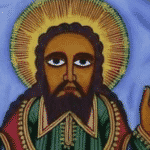 Trinitarian. Rastafari are traditionally Trinitarian and worship God the Father and His Son Jesus Christ and the Holy Spirit. They tend to depict Jesus as black and reject European depictions of Christ. As we will see below, they also see King Haile Selassie as a reincarnation or avatar of Jesus Christ. Some more advanced Rastafarians hold that God has had four avatars: Moses, Elijah, Jesus, and Haile Selassie.
Trinitarian. Rastafari are traditionally Trinitarian and worship God the Father and His Son Jesus Christ and the Holy Spirit. They tend to depict Jesus as black and reject European depictions of Christ. As we will see below, they also see King Haile Selassie as a reincarnation or avatar of Jesus Christ. Some more advanced Rastafarians hold that God has had four avatars: Moses, Elijah, Jesus, and Haile Selassie.